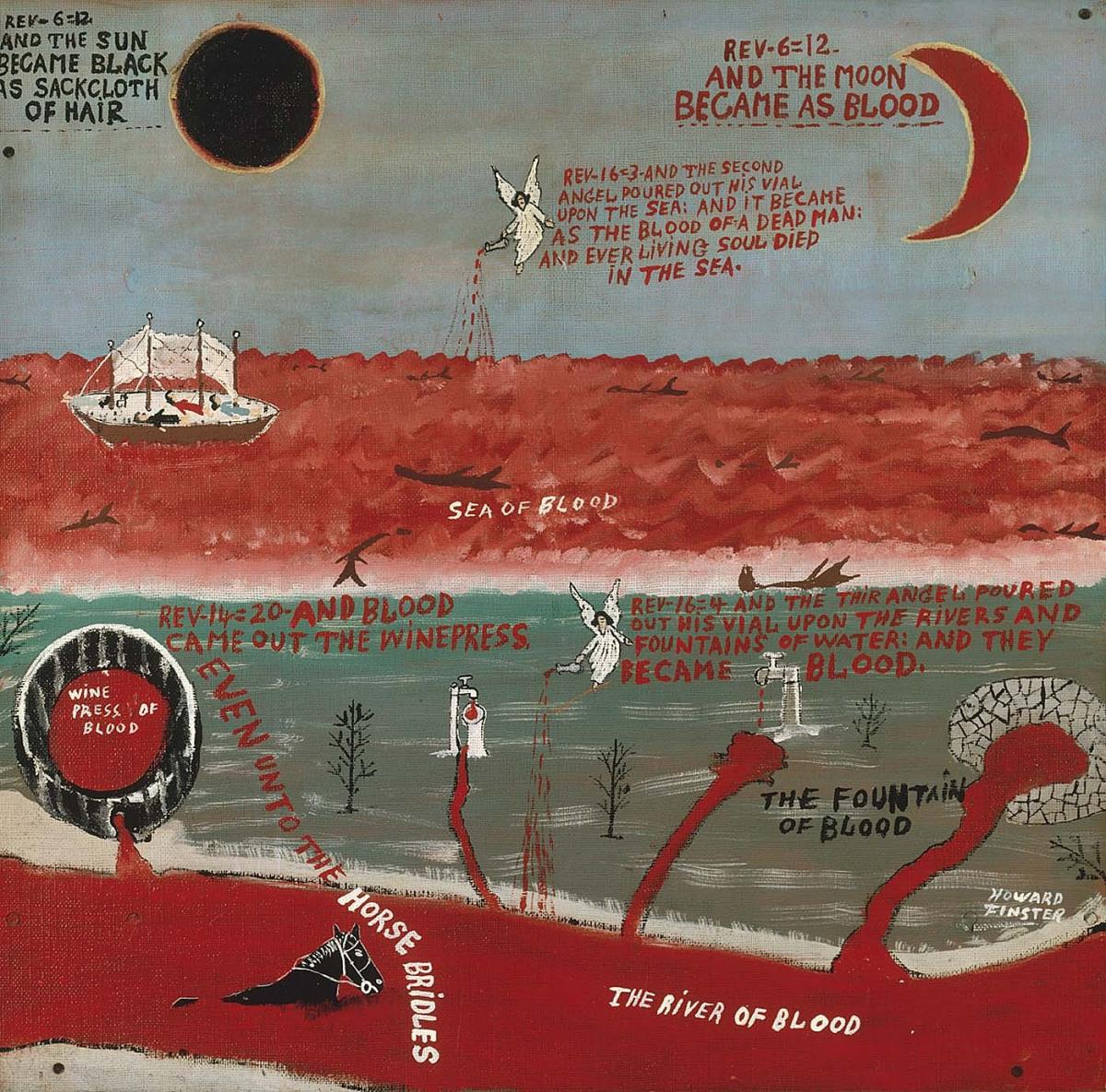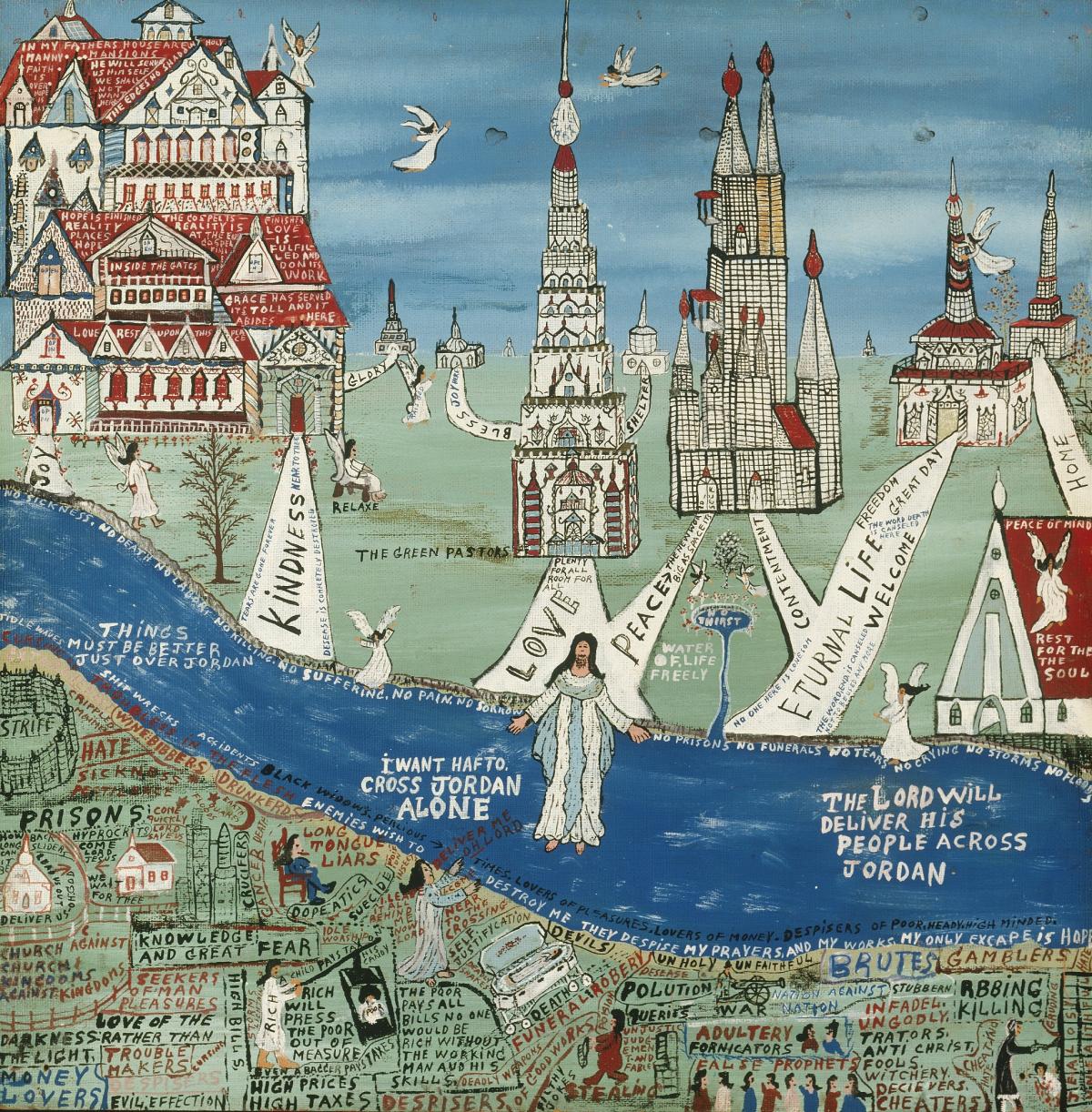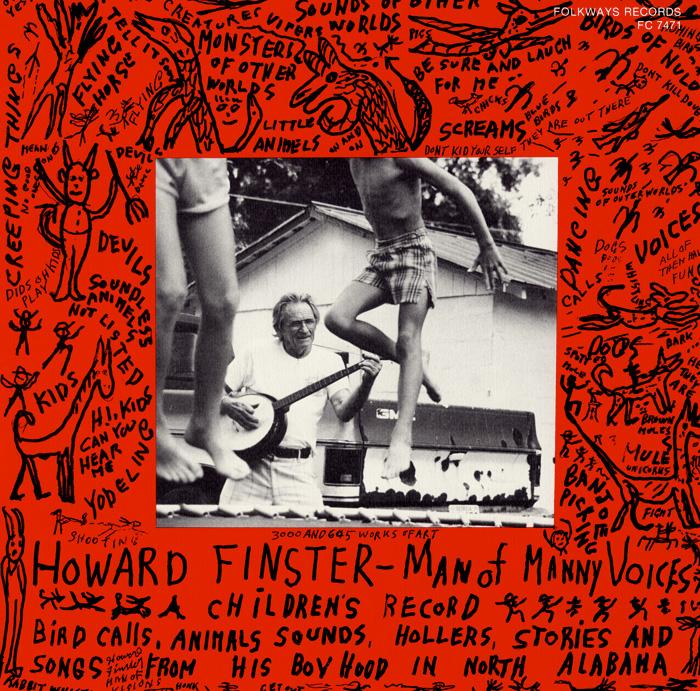What do album covers for the rock groups Talking Heads and R.E.M. have in common with a triptych depicting the Bible’s Book of Revelation? Howard Finster! The visual artist, musician, storyteller, and preacher’s wide body of work included artwork for both bands as well as a series of biblical paintings, now in the Smithsonian American Art Museum’s collection. His own album, Man of Many Voices, is in the collection of Smithsonian Folkways Recordings, the nonprofit record label of the Smithsonian Institution.
Born on December 2, 1916, Howard Finster grew up in a large family of meager means in Appalachian Alabama and Georgia. Trauma was ever present in Finster’s childhood, during which he suffered the death of five of his twelve siblings. His eclectic beliefs came to include extraterrestrial life and the idea that he had been reincarnated on earth to help save the doomed. In 1976, after some four decades of preaching, Finster responded to a vision in which God directed him to “paint sacred art.” He spent his subsequent years building Paradise Garden, a sprawling art-environment, on his property near Summerville, Georgia. During his lifetime, Finster made more than 47,000 artworks.
The sheer number of artworks Finster produced prompted critics to question his standing as an artist. His intense religiosity marginalized him still further. But he considered himself a missionary, the message was always the point. By the 1980s, the charismatic Finster had become the most highly visible and celebrated self-taught artist of his era, in large part thanks to his buoyant, larger-than-life persona. Ultimately, Finster highlighted flaws in an art world that was ill-equipped for understanding artists that didn’t conform to mainstream norms. He bent art to his unique vision, and epitomized the ways in which tradition, folk culture, and personal spirituality transform and become transformative through creative practice.
Finster rose to prominence when Paradise Garden attracted national attention from artists in the 1980s. Bands like R.E.M. and Talking Heads commissioned him to create cover art for their commercial recordings, and he appeared in the music video for R.E.M.'s debut single, "Radio Free Europe," which was filmed at the Garden. In 1985, Finster released his own record, Man of Many Voices, on Folkways Records. Described as a children’s record by producer and fellow artist Art Rosenbaum, it contains stories and songs from Finster’s childhood in Alabama, as well as dramatic improvisations and animal sounds recorded at his studio in Summerville. Finster created his own album cover art for Man of Many Voices, using a mix of photography, drawings, and text, creating a compelling collage of words and images.
Finster’s recordings came to the Smithsonian through producer Art Rosenbaum, who collaborated closely with Finster in situ at Paradise Garden and often traveled with him when he exhibited artwork around the country. In addition to writing the liner notes for Man of Many Voices, Rosenbaum includes several tracks by Finster on another album that he produced called Folk Visions and Voices: Traditional Music and Song in Northern Georgia - Vol. 2 (1984), which was part of a larger project about vernacular artists in the state of Georgia. Finster can also be heard on the Smithsonian Folkways compilation A Fish That's a Song, where he shares a brief vignette about how poverty affected his social opportunities as a child.
This story is drawn from text created for the exhibition We Are Made of Stories: Self-Taught Artists in the Robson Family Collection and words by Jeff Place, Smithsonian Folkways senior archivist. Amy Fox (SAAM) and Laura Shanahan (Smithsonian Folkways) contributed to this story.






















